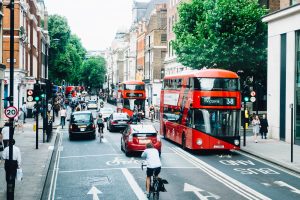This guide provides a summary of the recent Highway Code changes brought in over the last few years. We have provided an overview of a few key rules pertaining to the new hierarchy of road users. You also see some additional content at the bottom of this guide that you should find useful if you are looking to make a road traffic accident claim.
For further information, you can contact our advisors at any time of day using the following contact information:
- Call us on 0800 408 7826.
- Complete our online “Contact Us” form.
- Use the live chat feature on your screen now.
What Are The Most Recent Highway Code Changes?
The Highway Code contains rules and guidance for all road users. Together with the Road Traffic Act 1988, it imposes a duty of care on road users to do whatever they can to avoid causing harm to one another.
In 2022, the UK Government brought in significant Highway Code changes after a public consultation. 8 changes you need to know from these updates have been summarised in the sections below.
Crossing The Road At Junctions
Vehicles should now give way to pedestrians waiting to cross at junctions. The updated code also gives priority to those crossing the road over oncoming traffic. Pedestrians have the right of way at all types of crossings, including parallel and zebra crossings. So, if a pedestrian was knocked down by a car at a crossing, they may be eligible to claim compensation.
The updated rules reaffirm that cyclists are prohibited from using the pavement, but pedestrians have the right to use the cycle lane unless there are signs that prohibit usage.
New Hierarchy Of Road Users
The new hierarchy of road users does not remove the requirement for everyone to abide by the rules of the road, nor to act in a responsible manner and do whatever they reasonably can to avoid collisions. Those who are at the greatest risk of harm, namely pedestrians, are at the top of the hierarchy.
Under rule H1, the greatest responsibility to take care when navigating the roads and reduce the danger they pose to others is placed upon the drivers of large vehicles. The new level of responsibility for motorised vehicles is set out as follows:
- HGVs
- Large passenger vehicles, such as buses and coaches.
- Vans.
- Cars and taxis.
- Motorcyclists.
Cyclists, drivers of horse-drawn vehicles and individuals riding horses are also required to be mindful of pedestrians and reduce the danger to them.
The new hierarchy represents the most significant of the new Highway Code changes. Additional responsibility is imposed on those who have the greatest potential to cause harm to other road users.

Road Positioning When Cycling
The rules when using a bicycle are different depending on whether you are cycling on your own or in a group. Individual riders should:
- Keep to the centre of their lane on quiet roads, slow moving traffic and when approaching junctions or road narrowings.
- Maintain a minimum 0.5m gap from the kerb edge (further where safe to do so) when riding on busy roads with fast moving vehicles.
Groups of cyclists:
- Should be considerate of other road users.
- Riding 2 by 2 is permitted – this can be safer in larger groups or when cycling with children or other less experienced cyclists.
- Should show awareness of vehicles coming up behind them and give enough space to allow overtaking, such as by moving to single file where safe to do so.
When passing parked or stopped vehicles, cyclists should leave at least a door width (1m) to avoid being hit by the door if it opens. Cyclists should also be mindful of pedestrians attempting to cross the road.
Cycling, Riding Or Walking In Shared Spaces
“Shared spaces” refers to paths and walking routes that are open to pedestrians, cyclists and horses. The updated rules aim to create a considerate environment in these shared spaces. Rule 63 of the Highway Code stipulates that:
- Cyclists should give people walking, horse riders or those driving a horse drawn vehicle plenty of room and not pass at high speed.
- The bell should be used to alert walkers to their presence.
- Horses should not be passed on the left side and cyclists should slow down so as to avoid spooking the horse.
- Walkers should take care not to obstruct cyclists and horses, or endanger either riders or themselves.
Changes To Overtaking When Cycling Or Driving
There have been some Highway Code changes regarding overtaking other road traffic. These new rules are applicable to both cyclists and drivers.
Ordinarily, a double white line road marking means overtaking is prohibited. However, the overtaking of cyclists or horse riders who are travelling at 10mph or less is allowed if it is safe and necessary to do so.
Rules on overtaking:
- A gap of at least 1.5m should be given to cyclists when overtaking at up to 30mph, with a greater gap at higher speeds.
- Horses and horse-drawn vehicles should be passed at a maximum of 10mph with at least 2m of space.
- 2m of space should also be given to pedestrians where there is no pavement.
Cyclists may pass stopped vehicles, or slower moving traffic on either the driver’s or passenger’s side. Cyclists should be mindful of driver visibility when passing on the left. This is particularly important when approaching junctions or passing large vehicles.

Driving Horse-Drawn Vehicles, Riding A Horse Or Cycling On Roundabouts
The new guidance gives priority to cyclists on roundabouts. Horses and horse-drawn vehicles may remain in the left lane when crossing or going around roundabouts. Drivers and motorcyclists should:
- Allow cyclists to move across their path of travel when crossing a roundabout.
- Not overtake cyclists in their lane.
As per the new hierarchy of road users, motorists should take extra care on roundabouts and not cut across horses or bicycles in the left hand lane.
Cycling At Junctions
Cyclists are instructed to give way to pedestrians at junctions when turning into or out of a side road. There has also been the addition of cycling traffic lights at some junctions, which should be adhered to.
At junctions with no cyclist facilities, any cyclists must still obey traffic signals, including those at a zebra crossing.
Cyclists should position themselves in the centre of the lane as though they were vehicles. This is to make them as visible as possible, as well as to help prevent dangerous overtaking while turning.
Cyclists travelling straight ahead are given priority over vehicles waiting to turn into or out of side roads unless road markings or signs indicate otherwise.
Parking, Charging and Leaving Vehicles
New advice on getting into parked vehicles recommends a technique called the Dutch Reach. This means opening the door with the opposite hand to the side of the vehicle you are on, so drivers should open the door with their left hand.
What this technique does is make a person look over their shoulder behind them, therefore making it easier to observe any oncoming traffic.
Additionally, the Highway Code changes include advice on charging electric vehicles. This is the first time this guidance has been included in the Highway Code.
When charging an electric vehicle, care should be taken to ensure the cable does not create a hazard. The updated guidance states:
- Vehicles should be parked as close to the charging point as possible.
- A warning sign should be displayed if you can.
- Once charging is complete, cables should be returned neatly to avoid creating a trip hazard.
Contact Us
While this guide aims to be a brief summary of the latest updates to the Highway Code, we understand that we’ve included a lot of information here.
If you have been injured as the driver or passenger of a vehicle, cyclist or other road user, due to someone breaching their duty of care and failing to adhere to the new Highway Code rules, you may be eligible to claim compensation.
To learn about making a road traffic accident claim, contact our advisors using the contact information given here:
- Call us on 0800 408 7826.
- Complete our online “contact us” form.
- Use the live chat feature on your screen now.
Read About Road Traffic Accident Claims
You can find out about making a road traffic accident claim here:
- You can use our car accident value calculator guide to find out more about how compensation amounts are determined in road accident claims.
- Learn more about claiming for a motorcycle accident here.
- Read our guide to claiming compensation after a road accident death here.
We have also provided some external resources for further information:
- You can view the latest road safety campaigns from THINK! on their website.
- The latest road accidents and safety statistics are available on this Government page.
- Read more about administering first aid with this NHS resource
Thank you for reading this guide to the latest Highway Code changes. You can learn about how the new rules may affect your potential road accident claim by speaking to our advisors. The team are available 24 hours a day using the contact information given above.


